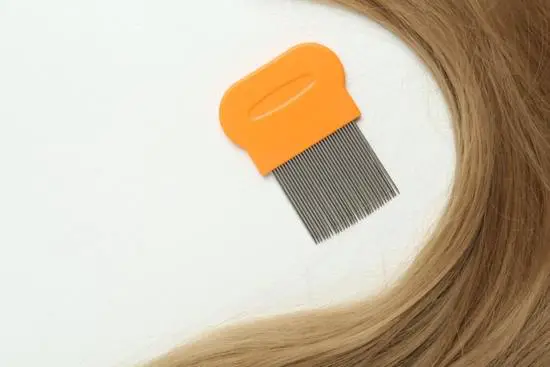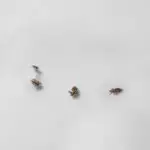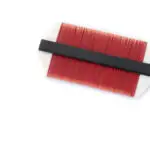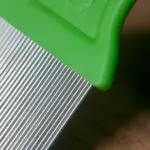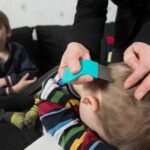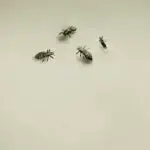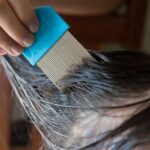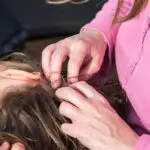How Do You Get Lice?

There are several different ways that you can get lice. Some of these ways include inanimate objects and head-to-head contact. Read on to learn more about the symptoms, treatment, and prevention of lice. Lice are a common problem, but there are ways to prevent them. These tips will help you protect your children and yourself.
Common ways to get lice
The most common way to get lice is through head-to-head contact. It’s impossible for these parasites to fly, so they are spread by crawling from person to person. Indirect spread through personal items is also possible, but less common. Most infestations occur in elementary school children and preschoolers. There is no correlation between personal hygiene and getting head lice, but treatment should be sought once you notice signs of an active infestation. Thankfully, over-the-counter medications for lice are available.
The best way to treat a lice infestation is to wash your clothing and bedding in hot water. You should also wash towels and combs with hot water and disinfect them. This is particularly important if you share towels or bedding with other people. You should not use a plastic bag or shower cap to wash your child’s hair.
Head lice are parasites that live on human blood. They stay close to the scalp and behind the ears. They can also be found on the eyelashes and eyebrows. While they are most commonly associated with young children, lice can be acquired at any age. While they are less common in black children, they can affect anyone. A louse can live for a month or two on a human head, depending on the amount of blood they can consume. Then they die.
The most common way to contract head lice is head-to-head contact with an infested person. However, lice can also be spread through clothing and shared items. This is because the nits on the infested person’s clothing can hatch on the clothing or items they share. Pets do not transmit lice to others. If you experience intense itching on your scalp, it is likely that you have head lice.
Lice are most active at night. Their eggs look like tiny specks that stick to your hair. They can be difficult to remove with your fingers and can cause you to scratch your hair, which can cause a skin infection. Lice can also cause irritability and difficulty sleeping.
Symptoms
Lice are insects that live on humans and are spread through personal contact and the sharing of personal belongings. They are especially common among young children. Lice typically live on the head, neck, and ears, although they can also be found in the pubic area. Head lice are most common in children, but they can also be found on body hair. They begin their lives on bedding and clothing and move onto people’s skin. Pubic lice, also known as “crabs,” are small critters that live on the hair and skin of the pubic area.
Lice can live up to two days on an inanimate object, so it’s important to get rid of any possible sources of infection. If you suspect your child has head lice, try to keep all of your child’s clothes and bed linens clean and dry. Using a nit-comb to remove lice is also helpful. Make sure to wash clothing and bedding regularly, and dry the affected areas in hot water. Also, comb through hair carefully, and always remember to use a wet paper towel between comb passes.
Lice tend to be active at night, feeding and moving around, so the symptoms of lice will be more obvious at night. While lice may not cause much discomfort in the early stages, they can disrupt quality sleep. If left untreated, lice usually won’t go away on their own, so it’s crucial to get rid of the lice as soon as possible. A single adult louse can lay up to 10 eggs per day, so if left untreated, they can multiply rapidly in as little as two weeks.
Although head lice are generally harmless, it’s best to get rid of them as soon as possible. Even if the symptoms are not immediately apparent, a physical examination can confirm whether you’re infested. Despite being a harmless, common parasite, head lice are highly contagious and spread quickly. Whether you’ve had close contact with a person or are experiencing an outbreak at school, getting rid of them will ensure that the outbreak doesn’t spread.
Lice are tiny creatures that live on human blood and will attach to the scalp. They usually stay close to the scalp and behind the ears. But they can also live in the eyebrows, eyelashes, and neck hair.
Treatment
One of the most effective ways to get rid of lice is to use a nonpesticide shampoo, like Rid. This shampoo contains a silicone-based material that disrupts the activity of lice by disrupting their ability to manage water. While this shampoo is more effective than many pesticide shampoos, be sure not to use too much or combine it with other products. If lice persist, it is best to see a doctor.
The first step is to wash everything in the house. Bedding and pillows should be washed in hot water, and you can also stuff pillows into the dryer to make them squeaky clean. Other items you may want to wash include hats, hair bows, and brushes. You should also avoid using car seats and strollers for a couple of days. It is important to remove all items from the house that you think may have lice.
You can also use prescription treatments to get rid of head lice. These include lindane (Kwell), benzyl alcohol (Ulesfia), ivermectin (Sklice), spinosad (Natroba), and malathion (Ovide). These treatments can be expensive, so it is important to find out what your insurance covers before you go to the doctor.
Another natural remedy is tea tree oil. This oil is great for treating lice. Coconut-scented conditioners also repel them. It is best to contact your doctor if over-the-counter treatments fail to work. If you do use any of these products, be sure to follow the instructions carefully. Lastly, make sure to contact your child’s school and let them know about their lice infestation.
Nix is another topical product that kills lice. It is safe to use for children two months and older. It should be applied to the hair after shampooing and rinsed thoroughly. Then you should use a fine-tooth comb to remove any lice that remain. This product is only effective if it is used in conjunction with other methods of treatment.
There are two types of head lice products: prescription products and over-the-counter products. Prescription medications may contain pyrethrins, a chemical that kills live lice and their eggs. But, these products may not be suitable for children with certain allergies to chrysanthemum. For this reason, you should consult a pediatrician or dermatologist before using these products.
Prevention
The first step in preventing lice in children is to avoid head-to-head contact. This can be accomplished by making sure that children do not share hair accessories, including bandanas and combs. Another important step in preventing lice is to keep all items that come into contact with the child’s head clean. This includes clothing, pillows, and car seats. It is also important that parents check the children’s hair often during the school year.
One of the best preventions for lice is to wash all clothing, bedding, soft toys, and other personal items in hot water. Then, seal the items in plastic and store in a dry place for at least 14 days. Similarly, it is important to disinfect combs and brushes regularly. Using an FDA approved lice shampoo or boiling the brushes in water is one way to disinfect them.
Another way to prevent lice is to clean protective helmets and headphones in between uses. Children should also avoid eating out in public places where the seats are upholstered. Also, if the child has long hair, it is best to keep it tied in a ponytail or braid, especially during an outbreak. Parents should also separate children’s coats and store them separately to prevent cross-contamination.
A good place to get more information on lice is the CDC. Their website has a lice page that allows you to sign up for email updates. This will provide you with the latest information on the condition and keep you informed. Even if you don’t have lice, you can take measures to avoid re-infection by making sure to clean your hair regularly and wash your clothes in hot water.
The best way to prevent lice is to avoid head-to-head contact. Although lice cannot jump or fly, they are spread by head-to-head contact. Avoid sharing hats, combs, and hairbrushes. Infested people should also avoid touching their head to another person’s head. If you feel the need to use these items, you can also wash them with hot water for 10 minutes. It is not necessary to use sprays, which can be toxic.
If you feel your child may have lice, it is important to seek medical advice as soon as possible. A doctor will be able to detect lice, so you can prevent its spread and cure it.
